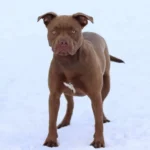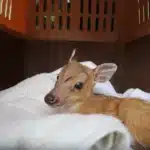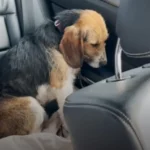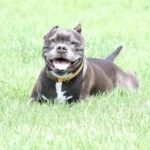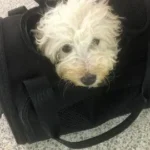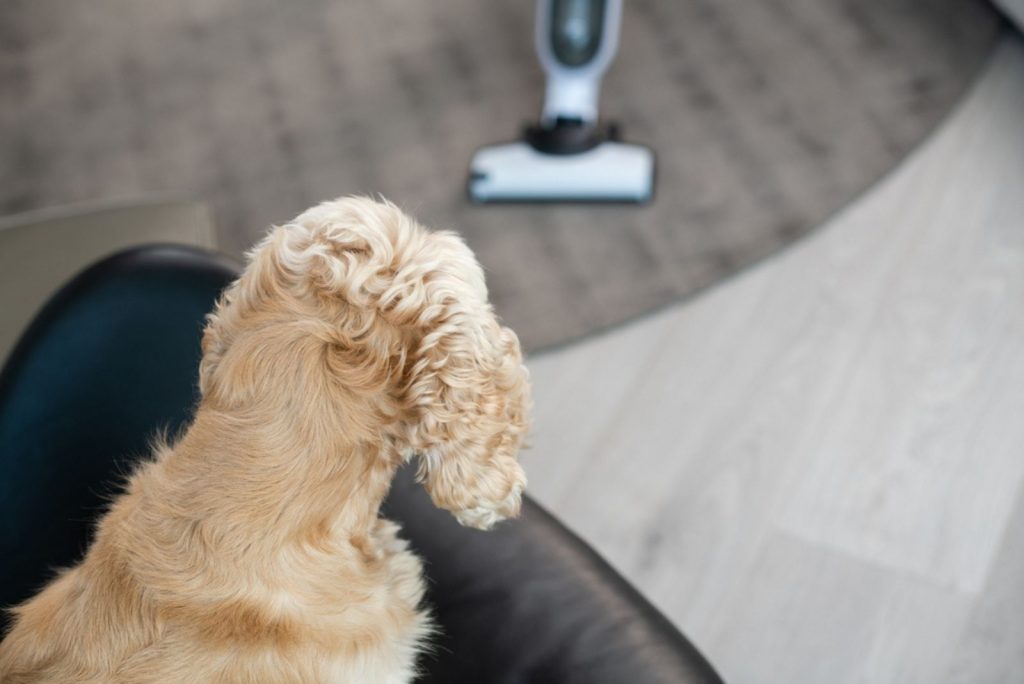

Among the many fears that dogs have, the vacuum cleaner seems to be one of the most unusual. However, there’s a logical reason behind this fear.
The loud noise is the primary source of this phobia. Dogs have much better hearing than humans, so the sound of a vacuum is significantly louder for them.
Imagine how painful it is for them when it already sounds noisy to us.
Besides the noise, the suction action of the vacuum also scares them. The combination of loud noise and suction creates fear, making them bark and back away from the vacuum.
This fear can become a problem when you’re trying to clean your house and your dog is indoors.
You don’t want to scare your dog, but you also need to clean the house regularly. So, what can be done about it?
How to Help Your Dog Cope with Vacuum Fear
Luckily, there are several simple things you can do to help your dog adjust to the vacuum. The sooner you start, the easier it will be for your dog to get used to it.
Get Him Out of the Room When You’re Vacuuming
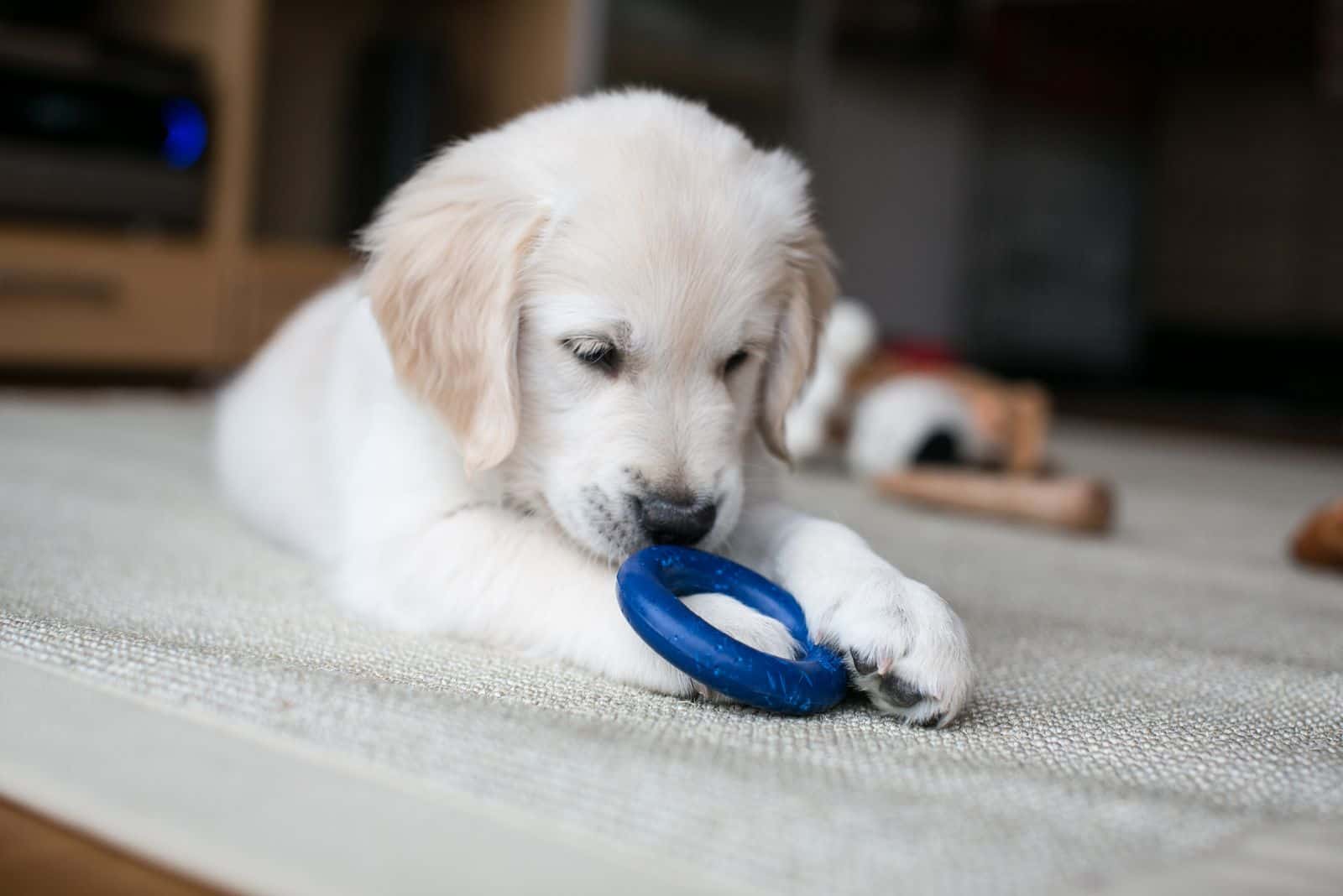

The easiest solution is to vacuum one room at a time and ensure your dog isn’t in the room you’re cleaning.
Not seeing the vacuum and having the noise muffled by a closed door will reduce the chances of your dog getting scared.
This is especially effective if you bring some of his favorite toys to distract him from the strange noise coming from the other room.
Desensitize Him to the Vacuum Sounds Early
Although it’s easier to start this process at an early age, it can be done at any life stage.
This process involves several steps and should be done gradually. Rushing can cause setbacks if your dog suddenly becomes uncomfortable around the vacuum again.
Use the Vacuum at Its Lowest Setting Around Your Dog
Start by using the vacuum at its mildest setting and avoid moving it around too much.
This helps your dog get used to the noise at a lower volume that won’t scare him as much.
It’s also helpful to use the vacuum far away from your dog initially, making the noise as quiet as possible.
Gradually move the vacuum closer to him, but only to a distance where he remains comfortable.
Give Him Treats for Progress
If your dog is responding well to the training, reward him with treats he loves.
This positive reinforcement helps him associate the vacuum with good things, making the process smoother.
Gradually Increase the Vacuum’s Power
As your dog becomes more comfortable with the vacuum’s noise and operation at lower settings, gradually increase the power.
Continue this process until your dog is comfortable with the vacuum at full capacity.
Once he reaches this stage, your dog should be fine with you vacuuming around him, as long as you avoid sudden movements.
Repeat the Process with Every New Vacuum
If you get a new vacuum with a different model, your dog might become anxious around it again.
This is normal because the new model likely has a different shape, sound, or even scent.
If your dog is scared of the new vacuum, you’ll need to repeat the desensitization process.
Signs Your Dog Is Afraid of the Vacuum Cleaner
While fear is a noticeable emotion, some signs of fear in dogs are more obvious than others.
Common signs of fear in dogs include:
- Stiff body and facial expression
- Ears raised on alert
- Tail between the legs
- Lowering himself as if ready to pounce
- Shaking
- Licking lips
- Raising a paw toward the source of fear
- Focused expression with a furrowed brow
- Averting gaze from the source of fear
- Mouth tightly shut
- Barking in a whining tone
- Trying to move away from the vacuum
- Urinating or defecating due to prolonged exposure to fear
- Freezing in place
- Pacing anxiously or other similar behaviors
If you notice these signs while the vacuum is on, it’s likely the cause of their fear. Turn off the vacuum to prevent further distress.
Conclusion
Dogs, while mostly brave, still have certain fears, and the vacuum cleaner is a common one.
Some dogs are less bothered by it than others, but it’s a persistent fear across all breeds.
While this fear may initially seem challenging to overcome, it’s relatively easy to manage with patience and gradual exposure.
Starting the process early makes it easier for your dog to adjust, but it can be done at any age.
I hope these tips help you and your dog overcome this issue.
Until next time, pet parents!


